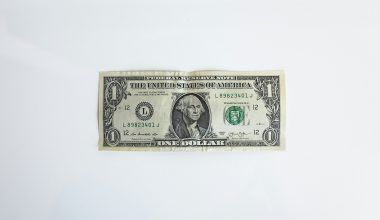Have you ever dreamed of having your very own creative space at home? Whether you’re a musician, podcaster, painter, or photographer, setting up a studio at home can be a game-changer. It doesn’t just save time and money—it also gives you the freedom to work whenever inspiration strikes. The good news is, you don’t need a massive budget or a giant room to make it happen. With some thoughtful planning and a bit of effort, you can transform a corner of your home into the perfect studio.
Why Set Up a Studio at Home?
Before diving into the how-to, let’s take a moment to consider why you’re setting up a home studio. For one, it’s convenient. Imagine having a dedicated space where all your tools and equipment are within reach, ready to use at any moment. Additionally, working in your own home offers unmatched flexibility. You can create at your own pace, without worrying about renting a space or adhering to someone else’s schedule. Plus, your home studio becomes an extension of your personality and style, giving you a unique environment tailored specifically to your needs.
Choosing the Right Space
When it comes to setting up a studio at home, the first step is finding the right spot. Not everyone has an extra room they can dedicate to their studio, and that’s okay. You might have to get creative—a quiet corner of your bedroom, an unused nook in your living room, or even a well-organized closet can work wonders.
Think about your specific needs. If you’re setting up a recording studio, soundproofing and quietness will be essential. For visual artists or photographers, good natural light might be your priority. Measure the area you’re working with and start envisioning how you’ll arrange your equipment.
Setting a Budget
It’s easy to get carried away dreaming about all the fancy equipment and decor you’d love for your studio. But before you splurge, set a realistic budget. Start with the essentials. If you’re building a music studio, you’ll need microphones, headphones, and maybe a keyboard. For artists, an easel, brushes, and high-quality paints might top the list. Remember, you can always upgrade later. Focus on creating a functional space first.
Lighting: The Secret Ingredient
Good lighting can make or break your home studio. For painters, photographers, or videographers, natural light is your best friend. Choose a space near a window if possible. However, if natural light isn’t an option, invest in daylight-balanced bulbs or LED lighting. These mimic natural light and help you see true colors.
For music or podcasting studios, soft ambient lighting can help set the mood. Think warm tones and dimmable lights to create a cozy, inviting atmosphere. Adding a small desk lamp or LED strips can also bring a professional touch to your setup.
Soundproofing Your Studio
If your studio activities involve sound recording, you’ll want to focus on soundproofing. Unwanted noise can ruin a great take, and your neighbors might not appreciate late-night jam sessions. Start with thick rugs or carpets to absorb sound. Foam panels are a popular choice for walls, but heavy curtains can also work wonders.
Sealing gaps in doors and windows can minimize outside noise. If you’re on a budget, even something as simple as adding bookshelves filled with books can help dampen sound. The goal isn’t necessarily complete silence but reducing echoes and external noise.
Choosing the Right Furniture
Your furniture can make a huge difference in how comfortable and functional your studio is. A sturdy desk is a must-have for most setups. For musicians or podcasters, consider desks with cable management features or enough space for your gear. Artists might need a height-adjustable desk or a drafting table.
Don’t skimp on seating. A comfortable chair is worth the investment, especially if you’ll be spending long hours creating. Look for an ergonomic option to protect your posture and avoid back pain.
Organizing Your Equipment
Once you have your basics in place, it’s time to organize your equipment. Use shelves, drawers, or wall-mounted racks to keep everything tidy and within reach. Cable management tools like clips and sleeves can help prevent tangles and make your studio look professional.
For visual artists, consider organizing your supplies by type or color. Musicians can use stands or hooks to keep instruments accessible. Keeping your studio organized not only saves time but also helps you stay inspired and focused.
Adding Personal Touches
Your studio should feel like your sanctuary. Adding personal touches can make it a space you’ll love spending time in. Hang up artwork, posters, or photos that inspire you. A potted plant or two can bring life and energy to the room. Even something as simple as a scented candle or a small speaker for background music can make the space more inviting.
Testing and Adjusting
Once you’ve set up your studio, take some time to test it out. Work on a project and see how it feels. Is there enough light? Are your tools easy to access? Does the space feel comfortable? Don’t hesitate to make adjustments. Setting up a studio at home is an ongoing process, and it’s okay to tweak things as you go.
Building a Routine
Having a home studio is exciting, but it’s also easy to get distracted. Building a routine can help you make the most of your creative space. Set aside dedicated time for your work and treat it like an appointment. Having a consistent schedule will help you stay productive and make your studio feel like a true workspace.
Final Thoughts
Setting up a studio at home is an incredibly rewarding project. It allows you to create a space that’s uniquely yours, tailored to your passions and needs. While the process might take some effort, the results are well worth it. So, roll up your sleeves, start planning, and get ready to unleash your creativity in your very own home studio. The possibilities are endless!
Related Articles:
For further reading, explore these related articles:
- China Anne McClain: The Story of a Talented and Inspirational Star
- Unpacking the Beauty of “The Best Day” Taylor Swift Lyrics
For additional resources on music marketing and distribution, visit DMT RECORDS PRIVATE LIMITED






